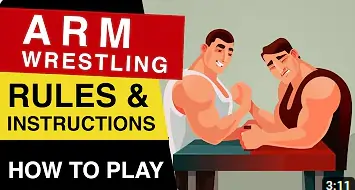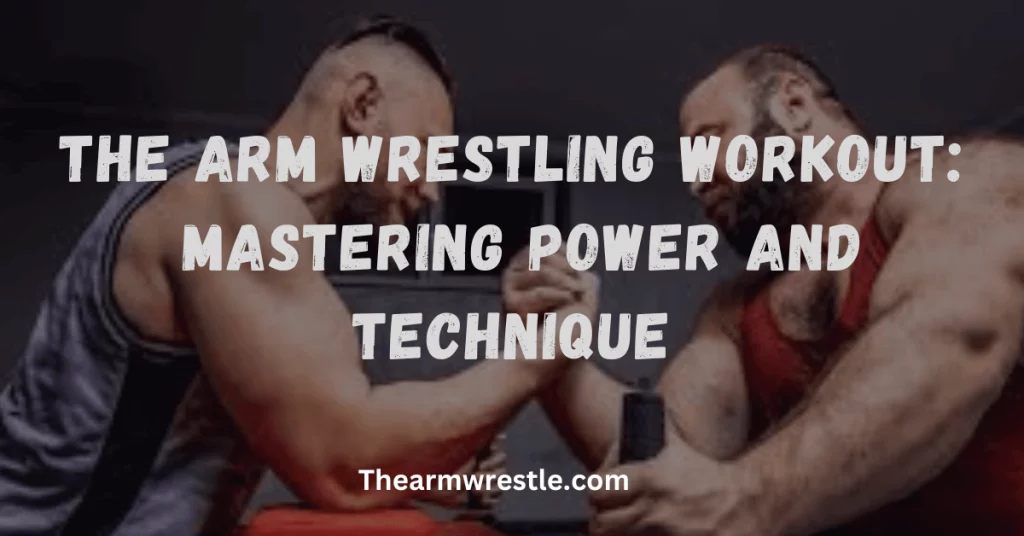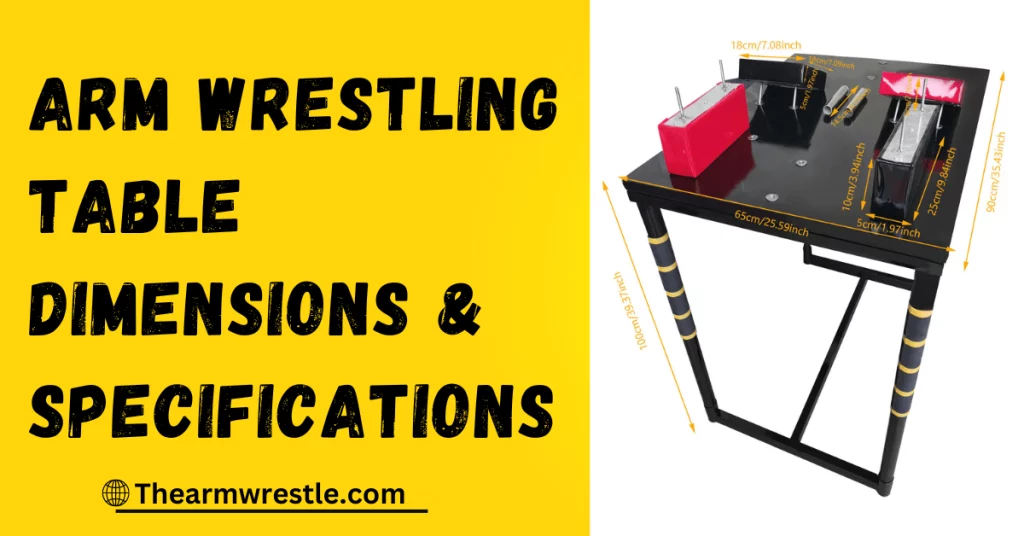Our comprehensive guide on common arm wrestling injuries, including elbow, shoulder, and wrist pain. Learn about the causes, symptoms, and effective recovery strategies to safely manage and prevent these injuries. Perfect for arm wrestling enthusiasts and athletes seeking to understand and overcome the physical challenges of the sport.
Arm wrestling is a sport that demands a lot from your body, particularly your arms. While it’s exhilarating and competitive, it can also lead to various types of pain, including in the elbow, shoulder, wrist, and the general feeling of your arm “killing you” after a match. Understanding these pains, their causes, and recovery methods is crucial for any arm wrestler.
Elbow Pain After Arm Wrestling
Elbow pain after arm wrestling is a common issue that participants of the sport often face. This type of pain usually arises due to the intense pressure and strain placed on the arm during a match.

Elbow Pain Causes
- Muscle and Tendon Strain: The rigorous and forceful movements in arm wrestling can lead to micro-tears in the muscles and tendons around the elbow. This strain is often due to the sudden and powerful forces exerted during a match.
- Lateral and Medial Epicondylitis: These are overuse injuries, commonly known as tennis elbow (lateral epicondylitis) and golfer’s elbow (medial epicondylitis). They occur due to the repetitive motions and overuse of the elbow’s muscles and tendons, leading to pain and inflammation in the elbow area.
Elbow Pain Recovery
- Rest and Ice: It’s crucial to give your arm ample time to heal. Rest helps in the recovery of the micro-tears, while applying ice to the affected area can reduce inflammation and swelling.
- Strengthening Exercises: Gradually strengthening the muscles around the elbow can help in recovery and also prevent future injuries. These exercises should be done carefully and ideally under professional guidance to ensure they’re done correctly and effectively.
- Proper Technique: One of the key preventive measures is to ensure the use of correct arm wrestling techniques. Proper form and technique can significantly reduce the strain on the elbow, thereby lowering the risk of pain and injuries.
Managing elbow pain effectively requires a balance of rest, targeted exercises, and proper arm wrestling techniques. If the pain persists or worsens, it’s advisable to seek medical attention for a more detailed evaluation and treatment plan.
Shoulder Pain After Arm Wrestling
Shoulder pain after arm wrestling is a common ailment that can stem from the intense physical demands of the sport. The shoulder, a complex joint with a wide range of motion, is susceptible to injuries, especially in sports that involve significant arm strength and movement. The causes of shoulder pain in arm wrestlers can vary, but typically include:

Shoulder Pain Causes
- Rotator Cuff Injuries: The rotator cuff, a group of muscles and tendons that stabilize the shoulder, can be strained or torn during arm wrestling. These injuries often occur from the rotational force exerted during a match.
- Muscle Strains: The abrupt and forceful movements required in arm wrestling can lead to strains in the shoulder muscles. These strains are a result of the muscles being stretched beyond their capacity.
Shoulder Pain Recovery
- Rest: It’s crucial to allow the shoulder to rest to prevent further injury. Avoiding activities that exacerbate the pain is key to recovery.
- Ice and Heat Therapy: Applying ice can help reduce inflammation and swelling in the initial stages, while heat therapy can be used later to relax and heal the muscles.
- Physical Therapy: Engaging in physical therapy can be beneficial. A physical therapist can recommend exercises that strengthen the shoulder muscles and improve flexibility, reducing the likelihood of future injuries.
- Pain Management: Over-the-counter pain relief medication can be used to manage pain and reduce inflammation.
It’s important to approach recovery with caution. If the pain is severe or persists despite rest and self-care, it is advisable to seek medical attention to rule out more serious injuries such as a rotator cuff tear. Early diagnosis and treatment can prevent long-term damage and aid in a quicker recovery.
Wrist Pain After Arm Wrestling
Wrist pain after arm wrestling is not uncommon, given the significant stress placed on the wrist joint during this intense sport. The wrist, a complex structure of bones, ligaments, and tendons, is essential for the twisting and gripping actions in arm wrestling, making it prone to various injuries. Here are the primary causes and recovery methods for wrist pain associated with arm wrestling:

Causes of Wrist Pain
- Sprains and Strains: The abrupt and forceful movements in arm wrestling can result in sprains (ligament injuries) or strains (tendon or muscle injuries). These injuries typically occur due to overextension or twisting of the wrist.
- Repetitive Stress Injury (RSI): Continuous and repetitive use of the wrist in arm wrestling can lead to RSI, causing pain and discomfort due to inflammation of the tendons.
Recovery Methods
- Rest and Immobilization: Allowing the wrist to rest is crucial for recovery. Using a wrist brace or splint can help immobilize the joint and prevent further injury.
- Ice Therapy: Applying ice to the affected area can reduce swelling and alleviate pain, especially in the initial stages after injury.
- Gentle Stretching and Strengthening: Once the acute pain subsides, gentle stretching and strengthening exercises can help rehabilitate the wrist. These exercises should be done cautiously to avoid re-injury.
- Anti-Inflammatory Medication: Over-the-counter pain relievers like ibuprofen can help reduce inflammation and manage pain.
- Physical Therapy: In cases of severe strain or persistent pain, consulting a physical therapist may be beneficial. They can provide targeted exercises and therapies to speed up the recovery process.
It’s important to approach wrist recovery with care, as rushing back into activity can worsen the injury. If wrist pain persists or significantly hinders movement, seeking medical advice is recommended to rule out more serious conditions like fractures or ligament tears. Proper diagnosis and treatment are essential for effective healing and to ensure a safe return to arm wrestling.
My Arm is Killing Me After Arm Wrestling
The phrase “my arm is killing me after arm wrestling” is a common expression of the intense discomfort or pain experienced following an arm wrestling match. This feeling can encompass various types of pain, from muscle fatigue to joint stress, and it’s important to understand its causes and how to effectively address it.
Causes of Arm Pain After Arm Wrestling
- Muscle Fatigue and Soreness: The high intensity of arm wrestling puts extreme stress on the arm muscles, leading to fatigue and soreness.
- Tendon and Ligament Strain: The force exerted during arm wrestling can strain tendons and ligaments, particularly in the elbow and wrist, resulting in pain.
- Joint Stress: The arm, especially the elbow and shoulder joints, can experience significant stress, leading to joint pain and discomfort.
Recovery Methods
- Rest: This is the most crucial step. Giving your arm time to recover is essential. Avoid activities that could exacerbate the pain.
- Cold and Heat Therapy: Applying ice initially can help reduce inflammation, followed by heat therapy to relax the muscles and improve blood flow.
- Pain Relief Medication: Over-the-counter pain relievers can help alleviate the discomfort.
- Gentle Stretching and Massage: Once the acute pain decreases, gentle stretching and massage can improve flexibility and circulation, aiding in recovery.
- Proper Nutrition and Hydration: A diet rich in protein, vitamins, and minerals, along with staying hydrated, supports muscle recovery.
- Consult a Professional: If the pain is severe, persistent, or worsens, it’s important to seek medical attention. A healthcare professional can provide a proper diagnosis and treatment plan.
It’s essential to listen to your body and not ignore persistent or severe pain, as this could be a sign of a more serious injury. Taking the appropriate recovery measures and seeking medical advice when necessary can help ensure a safe and effective return to arm wrestling.
Conclusion
Injuries in arm wrestling, while common, can be managed effectively with proper care and precautions. Understanding the causes of various pains, from the elbow to the wrist, and knowing how to recover from them, is vital. Remember, prevention is as important as treatment, so always practice proper technique and take care of your body before, during, and after your arm wrestling matches. Stay safe and keep wrestling!



